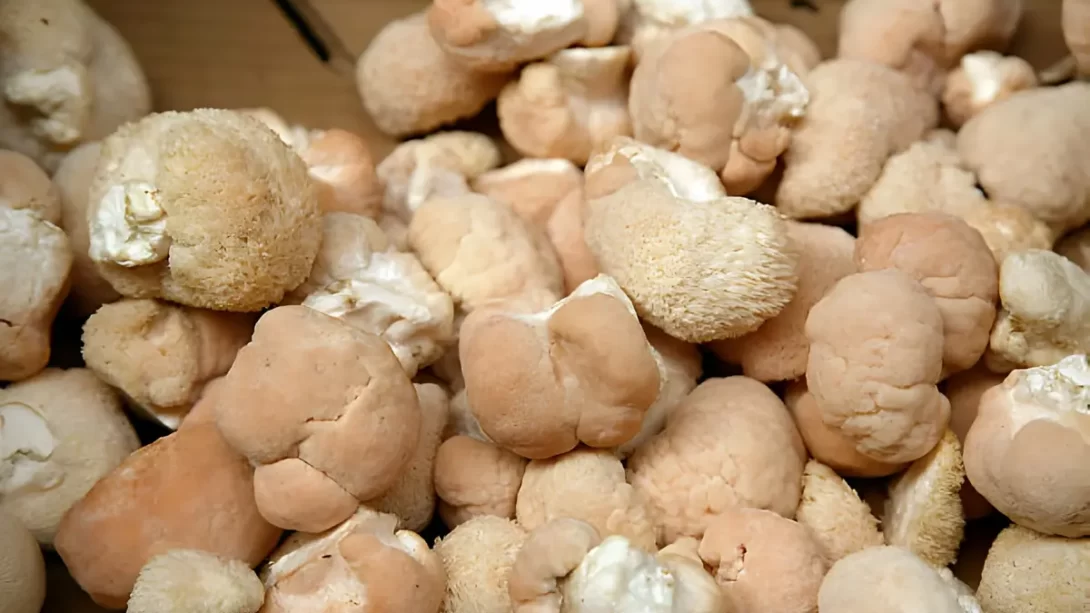The lion’s mane mushroom, known for its unique appearance and health benefits, is a sought-after delicacy in both culinary and medicinal circles. Proper storage of this mushroom is crucial to maintain its distinctive flavor and medicinal properties. In this article, we will explore various effective methods for storing lion’s mane mushrooms, ensuring they remain fresh and beneficial for as long as possible.
Lion’s Mane Mushroom
Lion’s mane mushrooms have a distinctive structure and composition that influence their storage needs:
- Characteristics: Known for their shaggy, mane-like appearance, these mushrooms are delicate and can be prone to quick spoilage if not handled correctly.
- Spoilage Factors: Key factors that contribute to the deterioration of lion’s mane mushrooms include exposure to moisture, light, and unsuitable temperatures.
Immediate Post-Harvest Care
Proper handling right after harvest or purchase is crucial:
- Gentle Handling: Handle these delicate mushrooms with care to prevent bruising or damage to their unique structure.
- Initial Cleaning: Gently brush off any dirt or debris. Avoid washing the mushrooms unless you plan to cook them immediately, as excess moisture can accelerate spoilage.
Short-Term Storage Methods
For keeping lion’s mane mushrooms fresh for a few days to a week, consider the following methods:
Refrigeration
The refrigerator is ideal for short-term storage:
- Optimal Temperature: Store the mushrooms in the refrigerator at temperatures between 34°F and 40°F (1°C to 4°C).
- Storage Containers: Use paper bags or wrap the mushrooms in a paper towel before placing them in a plastic bag with some air holes for circulation. This setup helps manage moisture and prevent mold growth.
Room Temperature Storage
For very brief storage periods, room temperature can suffice:
- Cool and Dry Environment: Keep the mushrooms in a cool, dry area away from direct sunlight, ideally in a breathable container like a paper bag.
- Duration: This method is only recommended for a day or two, as room temperature conditions can lead to quicker degradation.
Long-Term Storage Solutions
For preserving lion’s mane mushrooms over longer periods, several effective methods can be employed:
Drying
Drying is an excellent way to extend the shelf life of lion’s mane mushrooms:
- Air-Drying Method: Spread the mushrooms in a single layer in a well-ventilated area away from direct sunlight. Turn them occasionally to ensure even drying.
- Using a Food Dehydrator: Slice the mushrooms and arrange them in a dehydrator. Follow the manufacturer’s instructions regarding temperature and duration. Dehydrators provide a more controlled and consistent drying process.
- Storage of Dried Mushrooms: Once completely dry, store the mushrooms in an airtight container in a cool, dark place. Properly dried mushrooms can last for several months.
- Rehydration: To use, rehydrate the dried mushrooms in water or broth, which will restore their texture and size, making them suitable for cooking.
Freezing
Freezing lion’s mane mushrooms is another viable long-term storage solution:
- Preparation for Freezing: You can freeze lion’s mane mushrooms either raw or after cooking. For raw freezing, slice the mushrooms and blanch them in boiling water for a couple of minutes, then quickly cool them in ice water.
- Freezing Process: Place the blanched or cooked mushrooms on a baking sheet lined with parchment paper. Freeze them until solid, and then transfer to freezer bags or airtight containers.
- Usage: Frozen mushrooms can be used directly in cooking without thawing. Note that freezing may alter their texture slightly, making them softer upon cooking.
Pickling
Pickling is a creative way to preserve lion’s mane mushrooms while adding flavor:
- Basic Pickling Recipe: Create a pickling solution with vinegar, water, salt, and optional spices. Bring the mixture to a boil.
- Pickling the Mushrooms: Place the cleaned mushrooms in jars and pour the hot pickling solution over them, ensuring they are fully submerged. Seal the jars and let them cool.
- Storage: Store the pickled mushrooms in a cool, dark place. The acidic environment of the pickling solution acts as a preservative.
Usage Tips for Stored Mushrooms
Depending on the storage method used, there are various ways to enjoy lion’s mane mushrooms in culinary preparations:
- Using Fresh and Refrigerated Mushrooms: Fresh or refrigerated lion’s mane mushrooms are best used in sautés, soups, or stews. Their meaty texture and mild flavor make them a versatile ingredient in numerous dishes.
- Cooking with Dried Mushrooms: Rehydrated dried mushrooms work well in recipes where they can absorb flavors, such as risottos or pasta sauces. Remember to save the rehydrating liquid for added flavor in your dishes.
- Incorporating Frozen Mushrooms: Frozen lion’s mane mushrooms are excellent in cooked dishes. They can be added directly to stir-fries, casseroles, or soups, where their texture becomes tender and flavorful.
- Enjoying Pickled Mushrooms: Pickled lion’s mane mushrooms can be used as a garnish, in salads, or as part of an appetizer spread, offering a tangy and flavorful bite.
Conclusion
Storing lion’s mane mushrooms effectively allows you to enjoy their unique taste and health benefits long after the harvest season. Whether opting for short-term methods like refrigeration and room temperature storage or long-term solutions such as drying, freezing, or pickling, each method has its unique advantages and applications.
The key to successful storage is understanding the specific requirements of the method chosen and regularly checking the condition of the mushrooms. By following these guidelines, you can ensure that your lion’s mane mushrooms retain their optimal quality and are ready to enhance your culinary creations. Experiment with different storage techniques and enjoy the versatility and delightful flavor of lion’s mane mushrooms in a variety of dishes.



